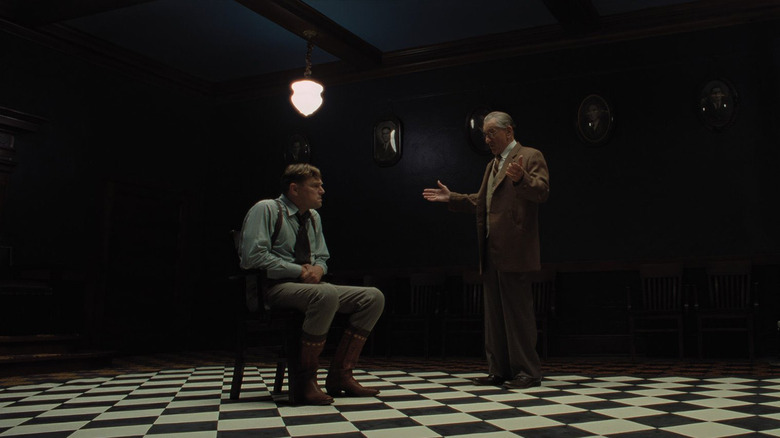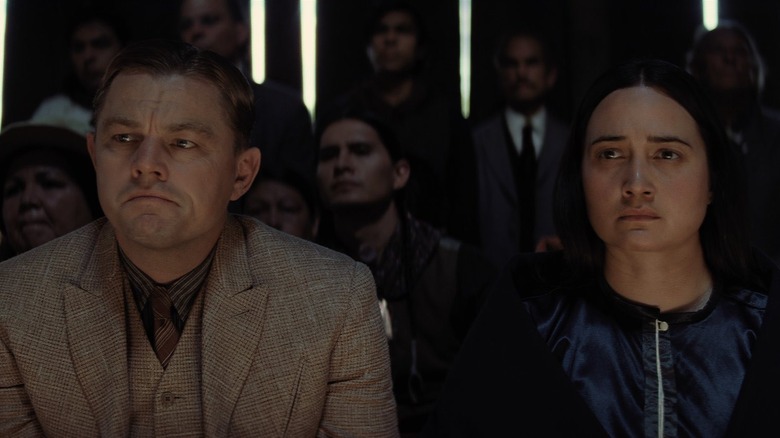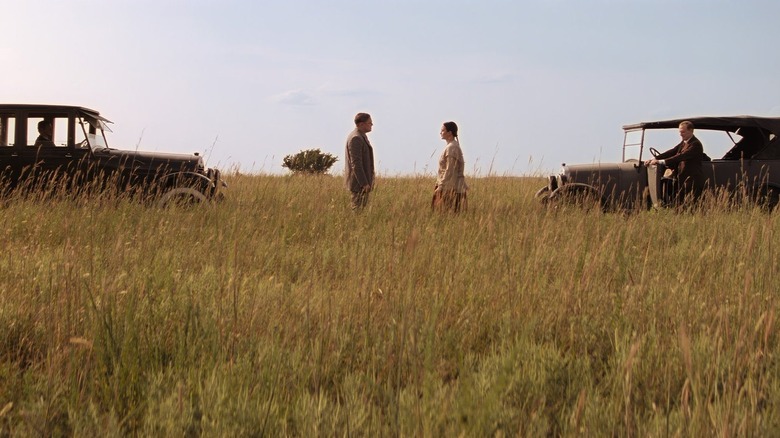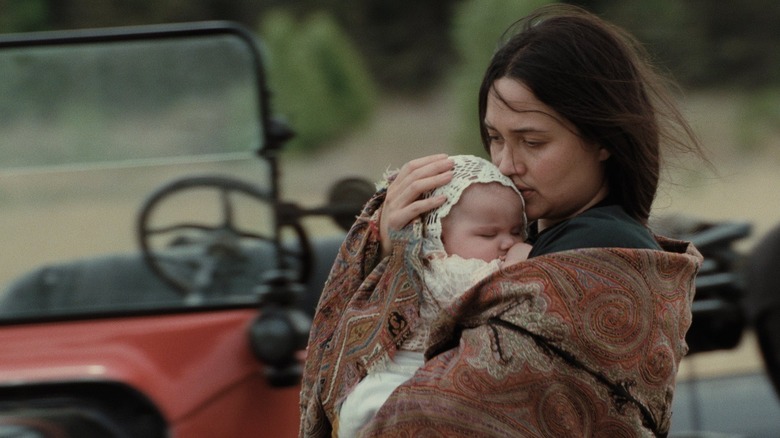Killers Of The Flower Moon's Original Ending Almost Sent Up A Classic Jimmy Stewart Movie
Before Martin Scorsese decided to end "Killers of the Flower Moon" with a profound coda set amidst the melodrama of a classic true crime radio show, the filmmaker considered taking inspiration from a controversial, FBI-influenced 1959 movie. In a new interview with Entertainment Weekly, Scorsese opened up about the making of the film's somber surprise ending, and explained that the Jimmy Stewart-led film "The FBI Story," directed by Mervyn LeRoy, was almost the basis for the final sequence.
"It's a series of the greatest hits of the FBI," Scorsese told the outlet, but he didn't exactly offer a glowing review for the movie. He's not alone: it's often been labeled as overt copaganda in retrospect. "It's in beautiful Technicolor and actually has some very well-done scenes, but there is a section on the Osage murders that is reviled by the Native American community," the filmmaker explained, concluding simply, "It's a travesty."
A movie set instead of a radio show
Scorsese originally planned to end the film with a different type of meta moment, showing the filming of a movie like "The FBI Story." Instead, as the script evolved to become less about the FBI and more about Mollie and Ernest Burkhart, he decided a radio play would be a better option. "I remember that I used to listen to radio when I was a kid because it was before TV," the filmmaker explained to EW, name-dropping programs like the long-running 20th-century true crime show "Gang Busters" and the Simon & Schuster-based mystery series "Inner Sanctum."
"There were some of those shows that were sponsored by the FBI, in effect," Scorsese pointed out. "So when we found that, I said, 'Okay, if we can't have a movie, what if we do it as a radio show?'" The end of "Killers of the Flower Moon" reads as a powerful statement about authorship and true crime ethics, casting corny, sensationalizing white men to retell Osage Nation's story, and then giving the final lines to Scorsese himself. It's a blisteringly self-aware act of implication, a confession from the filmmaker that yes, he is another white guy turning a real Indigenous tragedy into something people may see as entertainment.
The questionable perspective of the FBI Story
A parody of "The FBI Story" may have ended the film on a slightly different note; it would, I think, feel more like a condemnation of the FBI and Hollywood specifically than a statement about the ghoulishness of true crime storytelling and white narrative-stealing as a whole. But Scorsese's right about "The FBI Story" being a terrible retelling of the Osage murders. The Stewart-led film is a staunchly pro-FBI movie, with J. Edgar Hoover and FBI agent Tom White (the character played by Jesse Plemons in "Flower Moon") even appearing in on-screen roles — something Scorsese himself apparently pointed out in his EW interview.
The entirety of the Osage murders storyline in "The FBI Story" takes place in under 20 minutes, and it erases huge portions of the story while skimming over and misinterpreting others. Mollie and her sister Rita get a mention, and viewers see the scene in which Rita's family home is blown up. A character named Henry Roanhorse is played by an actual Indigenous actor, Eddie Little Sky, which was far from the norm at the time. Otherwise, though, the retelling is depressingly bad. Only white characters speak about the atrocities, while Native ones are silent in the background — or posed in ridiculous images of excess, as in scenes telling viewers about how some rich locals own dozens of bathtubs or telephones.
Scorsese stepped in to read the last lines himself
Stewart's character also says he posed as a cattle rancher for months with no clue as to who committed the murders, a direct contrast to the sloppy, obvious work of some of the real killers that went unsolved due to a blatant lack of investigation. Perhaps worst of all, the murders in "The FBI Story" end up being attributed to one lone man, a character named Dwight McCutcheon (Fay Roope), who's caught due to some silly typewriter-related forensic science. It's a gross mischaracterization, one that reimagines systemic, coordinated killings as detective fiction. In this sense, it would've been a great project on which Scorsese could build his final closing point about the shoddiness of true crime retellings.
The "Killers of the Flower Moon" ending we got was still breathtaking, though. Scorsese says the film's last lines were originally meant for another actor, but he decided to read them himself, a choice that lent the film a tremendous amount of gravity and self-awareness. "As I was repeating [the line], I'm thinking about the lineup of the graves of the mother, the sisters, the father, and the little girl," the filmmaker told EW. "I said it. I did it. And finally everybody froze and said, 'That may be it. Maybe it's okay. Just go with that, rather than ending it in a conventional way.'"



